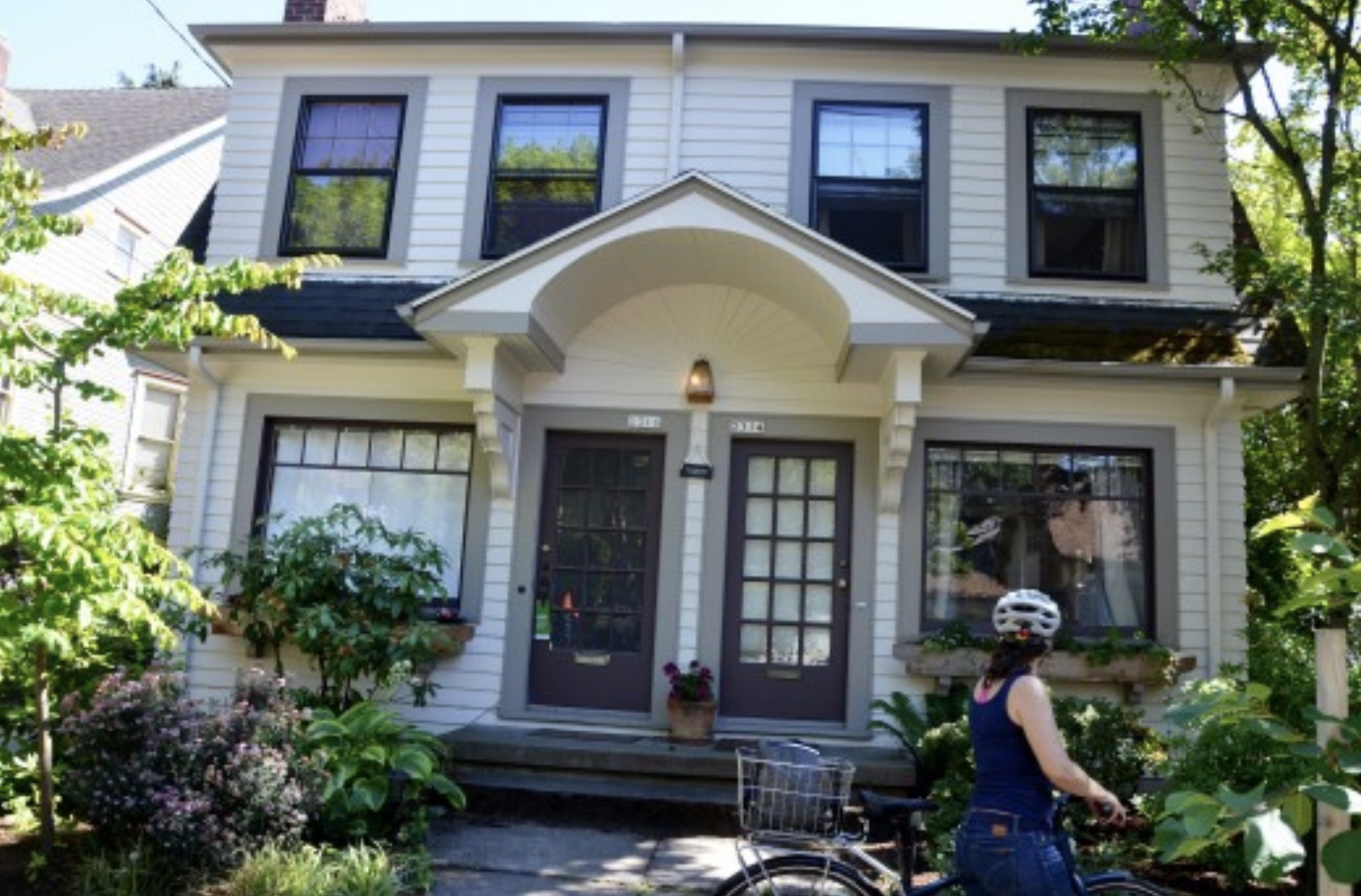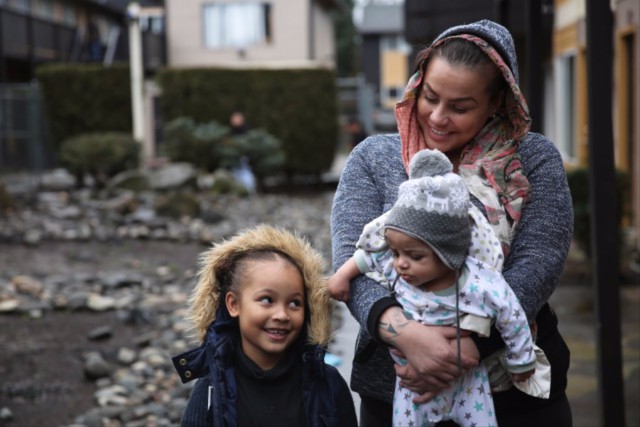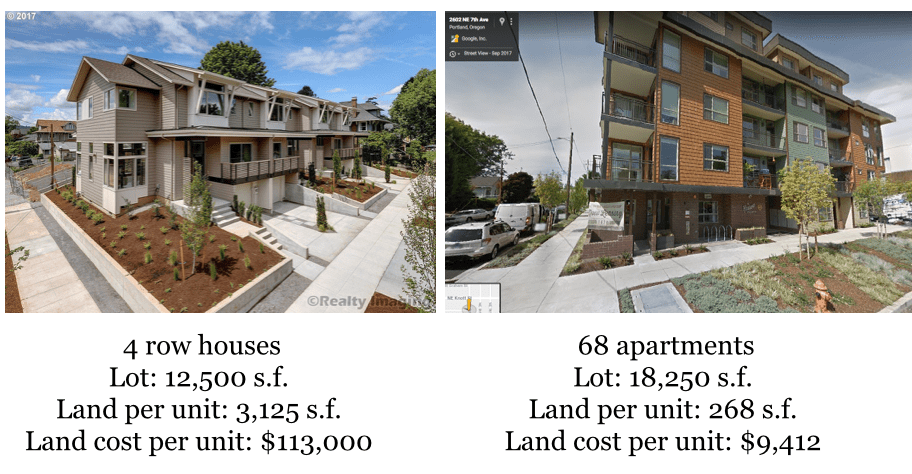
Share On Social!
For nearly 100 years, it has been illegal to build anything other than detached, single-family homes on most residential land.
As a result, many cities are facing a housing affordability and stability crisis which disproportionately displaces Latinos and low-income communities of color, contributing to disparities in health and wealth.
That’s why advocates across the country are pushing for rent control and more inclusive zoning laws — and it’s working in Oregon (13.3% Latino).
This year, Oregon passed Senate Bill 608 and House Bill 2001. These laws include three major policy changes: Banning no-cause evictions, passing state-wide rent control, and legalizing duplexes.
Affordable Housing Crisis
As access to affordable housing diminishes across the nation, Americans are increasingly turning to rental housing. In 2017, renters became the majority in the largest 100 cities, according to PolicyLink.
However, rent is not affordable for low-income families, which introduces a cascade of health and social problems.
“A full-time minimum-wage worker cannot afford a one-bedroom apartment in 99% of counties,” according to a February report by PolicyLink, the Center for Popular Democracy, and the Right To The City Alliance.
In Oregon, one in three renters pay more than 50% of their income in rent. Additionally, a renter making minimum wage would need to work 77 hours a week to afford a two-bedroom apartment.
In one low-income, majority-Latino apartment complex in Portland, Oregon, for example, city inspectors documented more than 400 individual housing code violations. These included mold, loose electrical outlets, and missing smoke detectors in dozens of occupied units, according to Oregon Public Broadcasting.

The poor conditions of rental units can cause or aggravate health problems, but renters are often reluctant to report problems to their landlord for fear of eviction.
Latinos particularly face risks of eviction and displacement.
Those experiences can have adverse impacts, which include pushing individuals further from transit centers, disrupting social networks, putting individuals at greater physical as well as mental health risk, and leading to employment insecurity, according to a Salud America! Research Review.
Studies link the threat of eviction to poor health, high blood pressure, depression, and anxiety.
1. Banning No-Cause Evictions
Prior to the new law, property owners and managers in Oregon could terminate a rental agreement with a tenant for no cause as long as the landlord provided a 30-day notice.
Landlord-based causes for eviction are now limited to just four reasons for tenants who have been in their home for at least a year:
- The landlord intends to either demolish the unit or use the unit for something other than a residence;
- The landlord intends to make repairs or renovations and the property will be unsafe to live in;
- The landlord or the landlord’s immediate family member plans to move in; and
- The landlord has sold the unit to someone who plans to move in.
By providing families with greater residential stability, just-cause eviction can reduce stress and adverse health outcomes, according to a 2009 report by the Multnomah County Health Department on the health impacts of housing.
2. Controlling Rent
Currently, 37 states prohibit or ban rent control. That number no longer includes Oregon.
“[Universal rent control] is the most immediate and effective way to stop displacement and gentrification at scale,” Pam Phan, of Oregon’s Community Alliance of Tenants (CAT) told Curbed.
By repealing the previous laws, Oregon can control rent by restricting annual rent increases to 7% plus inflation on buildings that are 15 years or older.
Rent control is critical for—and seriously benefits—those most harmed by rising rents and displacement, including:
- Seniors
- People living with chronic illness or disability
- Families with children
- Low-income tenants
- Communities of color
- Immigrants
- Women
The cascading benefits of stable and affordable rental homes help low-income renters be more economically secure, which is good for the economy, health, and education immediately and for future generations.
The new rent control legislation will immediately stabilize a half-million households in Oregon, the PolicyLink report states.

Tenants groups in Oregon have been mobilizing to pass rent control legislation for over 20 years.
Limiting no-cause evictions and stabilizing rent are the first steps to keeping families in their homes.
Another step to further improve housing stability and affordability includes the state building more homes.
3. Legalizing Duplexes
Exclusive zoning laws in Oregon made it illegal to build anything but detached, single-family homes on most residential land.
Now, in cities with more than 10,000 residents, duplexes are legal. In cities with more than 25,000 residents, duplexes, triplexes, fourplexes, attached townhomes, and some “cottage clusters” are now legal.
Single-family zoning is an exclusionary practice because it disregards people who can’t afford a detached home, thus cementing racial and economic segregation.
By preventing lower-income people from moving into wealthy and middle-class neighborhoods, it limits their access to the education, employment and health opportunities typically found in wealthier neighborhoods.

This perpetuates the cycle of poverty and contributes to disparities in health.
Moreover, exclusionary zoning correlates with higher degrees of sprawl and lower density, which leads to higher housing prices and greater dependence on automobiles.
To improve health equity and reduce housing and transportation costs, additional housing types, like duplexes, triplexes, and quadplexes should be allowed in residential areas.
To improve Latino health, it is important to keep Latinos in their homes and to keep those homes affordable and in good quality.
Spread the word about what Oregon is doing to address housing stability and affordability.
Share this with health, equity, and housing advocates to push for similar policies in your community and state.
By The Numbers
56.9
percent
of Latinos are "housing cost burdened"



